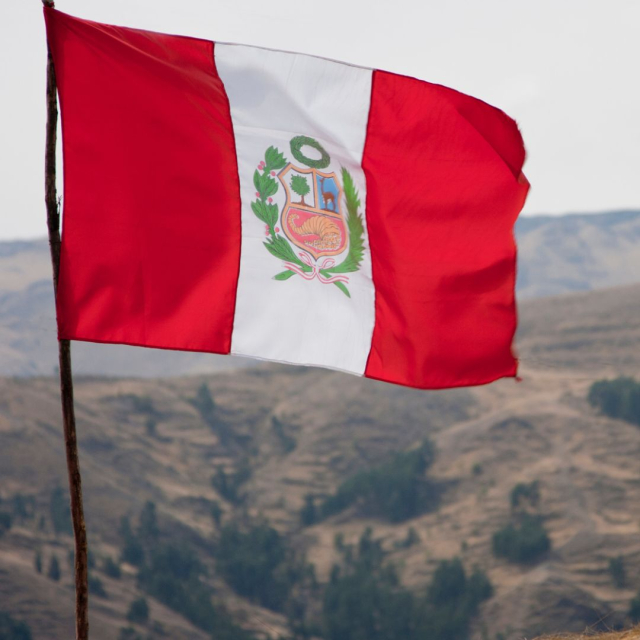The National Anthem of Peru is an emblematic piece of music that represents the identity and history of the South American country. Composed by José Bernardo Alcedo and with lyrics by José de la Torre Ugarte, this composition has evolved since its creation in the 19th century to become a national symbol of great significance for Peruvians. Over the years, it has experienced variations in its lyrics and interpretation, thus reflecting the historical and cultural changes that Peru has gone through.
Origins and Composition
The National Anthem of Peru was composed by musician José Bernardo Alcedo and officially adopted in 1821, during the country's independence era. Alcedo, born in Lima in 1788, was a talented composer and violinist who had studied at the Royal University of San Marcos. His work, which would later be known as the National Anthem, was selected by the Liberator José de San Martín to represent the new Peruvian nation.
The process of composing the anthem was not without controversy and discussion. It is known that Alcedo presented several versions before arriving at the final version that we all know today. The anthem's lyrics were written by José de la Torre Ugarte, a Peruvian poet and politician who collaborated closely with Alcedo to ensure that the music and lyrics were an adequate reflection of the patriotic spirit of the time.
Evolution of the Lyrics and Adaptations
Over the years, the lyrics of the National Anthem of Peru have undergone significant changes. Originally, the first stanza began with "We are free, let's always be free" and continued with verses that celebrated the independence of Peru and called on its citizens to defend freedom. However, as the country's history has evolved and different governments and historical periods have followed, adjustments have been made to the lyrics to reflect these changes.
During the government of Manuel Pardo y Lavalle in the 1870s, some modifications were made to the anthem to include references to the Constitution and Congress, reflecting the political context of the time. Later, during the 20th century, other minor adjustments were made to modernize the language and make the lyrics more accessible to all Peruvians.
Meaning and Symbolism
The National Anthem of Peru is not only a musical composition, but also a symbol of national identity and a reminder of the ideals of freedom and sovereignty for which Peruvian patriots fought during independence. Every time the anthem is sung at civic events, public ceremonies or sports celebrations, the sense of national unity and patriotic pride among Peruvian citizens is reinforced.
The anthem's lyrics celebrate the country's natural beauty, its glorious history and the bravery of those who fought for freedom. The words "Freedom, freedom, freedom!" They resonate as an eternal call to maintain and defend democratic principles and fundamental human rights. This is why the National Anthem of Peru continues to be relevant and significant in the current context, reminding Peruvians of all generations of the values on which the nation was founded.
Interpretation and Dissemination
The interpretation of the National Anthem of Peru is a crucial part of its cultural impact. Over the years, different artists, choirs and bands have offered unique interpretations of this composition. From classic versions to modern adaptations that incorporate contemporary instruments, the hymn has proven its versatility and adaptability over time.
In addition, the dissemination of the anthem has spread through various media and platforms. From presentations at international sporting events to official and educational ceremonies in schools, the anthem remains a central element in the country's public life. Even in the digital age, where music is easily shared and played online, the anthem continues to be a cornerstone of Peruvian musical culture.
National Anthem and Cultural Heritage
In recognition of its cultural and symbolic importance, the National Anthem of Peru has been declared Cultural Heritage of the Nation. This distinction not only protects the musical composition itself, but also underlines its role in preserving Peruvian national identity. The country's cultural and educational authorities actively promote the study and dissemination of the anthem among new generations as a fundamental part of their civic and cultural education.
ANTHEM:
Are we free, let us always be,
and before the Sun denies its lights,
that we miss the solemn vow
that the Homeland elevated to the Eternal.
The Peruvian was oppressed for a long time
the ominous chain dragged.
Sentenced to cruel servitude,
For a long time in silence he moaned.
But just the sacred cry
Freedom on its shores was heard!
The indolence of a slave shakes,
lift up your humiliated neck.
Already the roar of angry chains
that we heard three centuries of horror,
from the free to the sacred cry
which the world heard astonished, ceased.
Everywhere Saint Martin inflamed,
freedom, freedom, pronounced,
and rocking its base the Andes
They announced it, also with one voice.
With its influence the people awaken
and like lightning the opinion spread;
from the isthmus to the lands of fire,
From the fire to the frozen region.
Everyone swears to break the link
that Nature denied both worlds,
and break that scepter that Spain
She leaned proudly on both of them.
Peruvians, the favorable fate
He bowed to your desires,
and the triumph awakens the echoes
of the fame that applauded your love.
Comrades, no more seeing her as slaves,
If the enthusiastic clamor heard,
and the united echoes stir
to the earth like thunder better.
Freedom, freedom, freedom,
encourages the people with vigor,
and the fields are covered with flowers,
At its peak the Andes give it.
In your image, gentlemen, we swear
that these lands will belong to a canton
may he receive to his throne of justice
the greatness of noble Peru.
And now, let the aura of glory
He caresses his people with his voice,
or laurel of immortal Peru
the one who will hear eternally in flower
